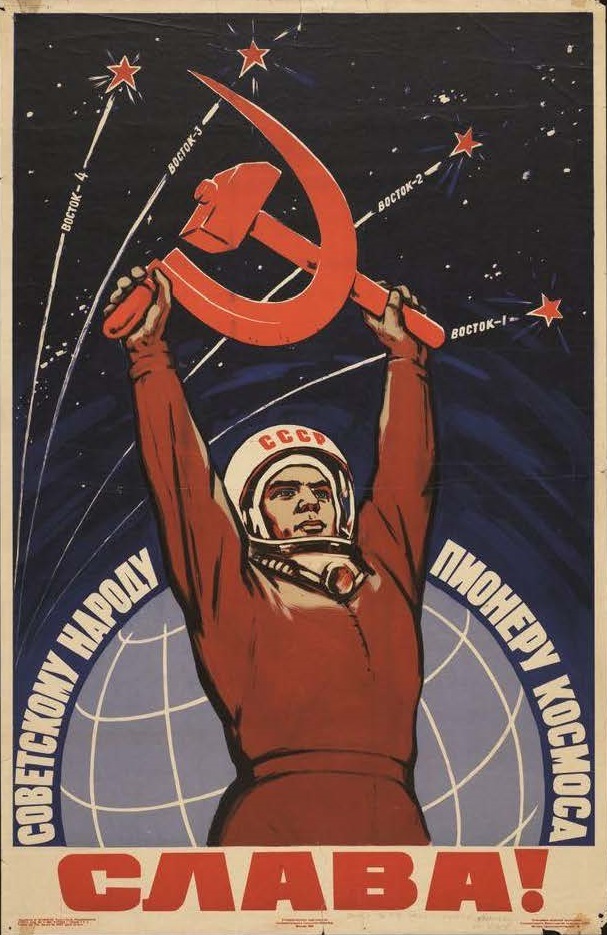1960s Propaganda
The Space Race
Soviet propaganda during the 1960s celebrated its various achievements in space and technology.
Instead of directly fighting the United States, the Soviet Union invested its money in education and innovation to outdo the United States in any way possible. On October 4th, 1957, the Soviet Union launched the Sputnik satellite, the first artificial satellite to enter the atmosphere (Davis 2021). This frightened the United States because the satellite flew over the United States daily, and the US became concerned over its use and other Soviet technology. As a result, the Space Race officially began.
While Soviet propaganda invested in the narrative of the success of Sputnik, it also featured and celebrated its achievements with their cosmonauts.
In April, 1961, spaceflight Vostok 1 helped Yuri Gagarin become the first person in Space, and the first person to orbit the Earth (Davis 2021). Serving a monumental blow to the United States’ space program NASA, the Soviet Union used its strong propaganda machine to celebrate the success of Vostok 1, and the follow-up Vostok mission in August, 1961 (Davis 2021).
The new priorities and achievements in space technology during the 1960s helped the Soviet government construct new propaganda surrounding the concept of the "New Soviet Man" (Gerovitch 2015, 3). Soviet cosmonauts served as the ideal citizen personified. This "New Soviet Man" was an idealized version of a future Communist citizen. It officially became part of the Soviet propaganda agenda after Yuri Gagarin's space achievement, portraying Gagarin and other cosmonauts as heroes who fully controlled their spaceships - when, in reality, they were fully automated machines (Gerovitch 2015, 48). Instead of "passive" individuals, the Soviet propaganda of the "New Soviet Man" advocated for citizens to be active participants in the community, but also willing subordinates (Gerovitch 2015, 49-50).
Effect of "New Soviet Man" Propaganda
Young Soviet citizens internalized the ideals of the "New Soviet Man" and attempted to reform themselves according to the propaganda imagery. Individuals began to construct new identities surrounding this ideal, and resorted to "self-fashioning, impersonation, and outright imposture" so that they could fit in as the perfect "proletariat" citizen.
Space Race & Disinformation
The Space Race and "New Soviet Man" propaganda campaign involved creating and maintaining a clean image of the Soviet space program. The USSR applied a "systematic effort" to "create and disseminate space myths, suppress counter memories, and privately cultivate cultural myths" (Gerovitch 2015, 3). The Soviet public received this propaganda and used the successes of the USSR in the Space Race to further their patriotism and notion of celebrity (Gerovitch 2015, 4). Soviet children born in the 1950s (nicknamed the "Sputnik Generation") have acknowledged in interviews how formative the Soviet contributions were in the Space Race, despite an inability to remember when Gagarin took flight or when the Sputnik was launched (Gerovitch 2015, 4).


